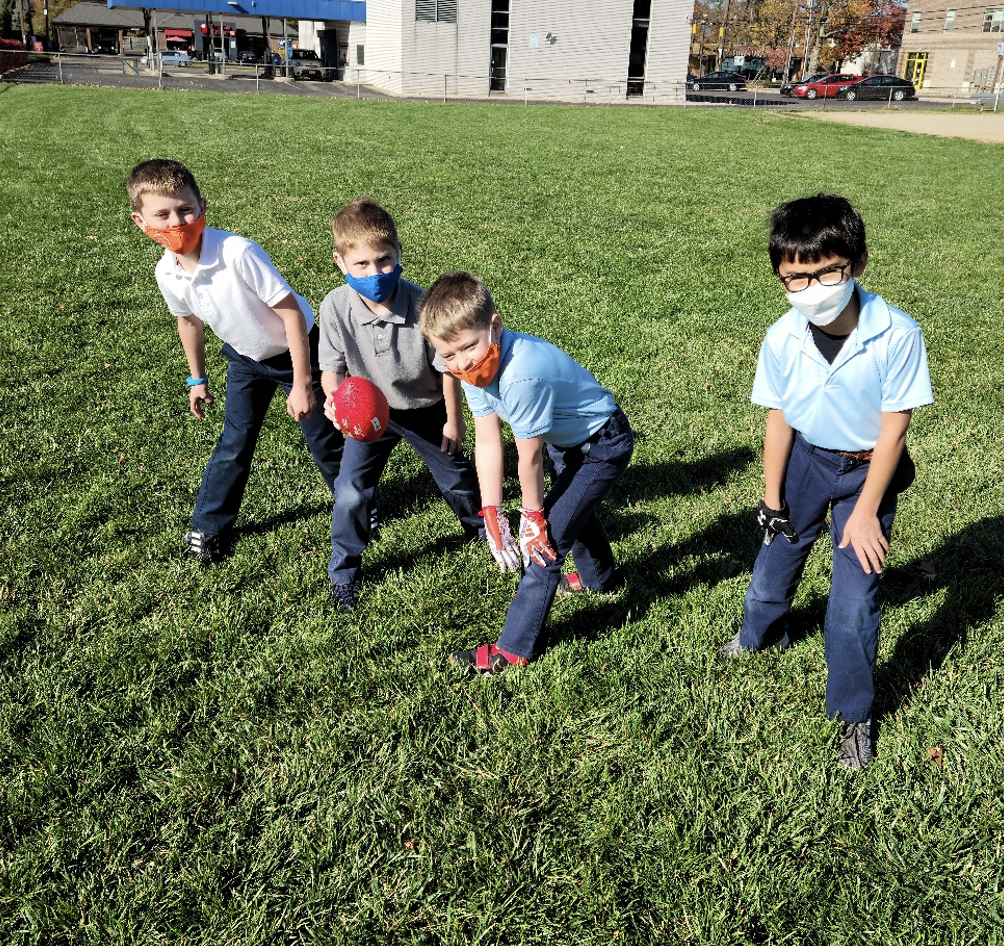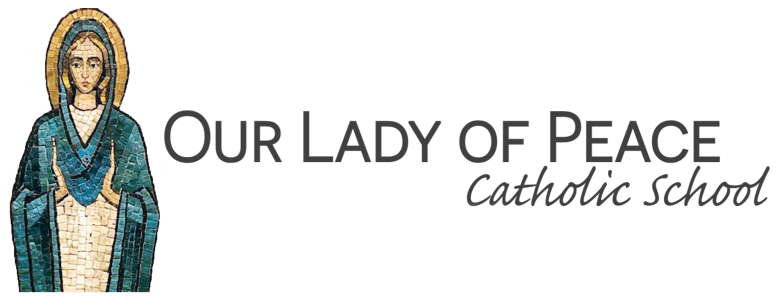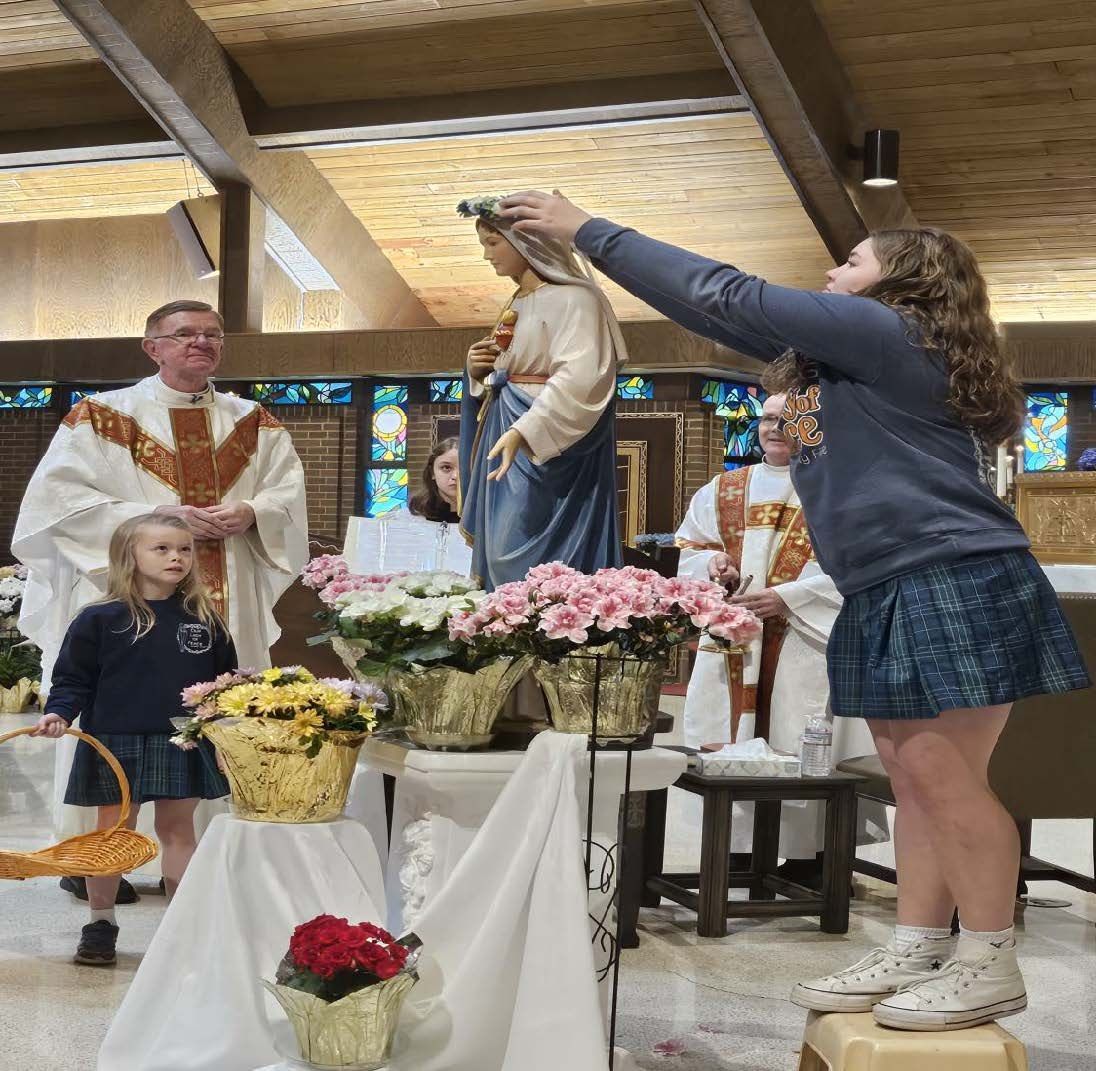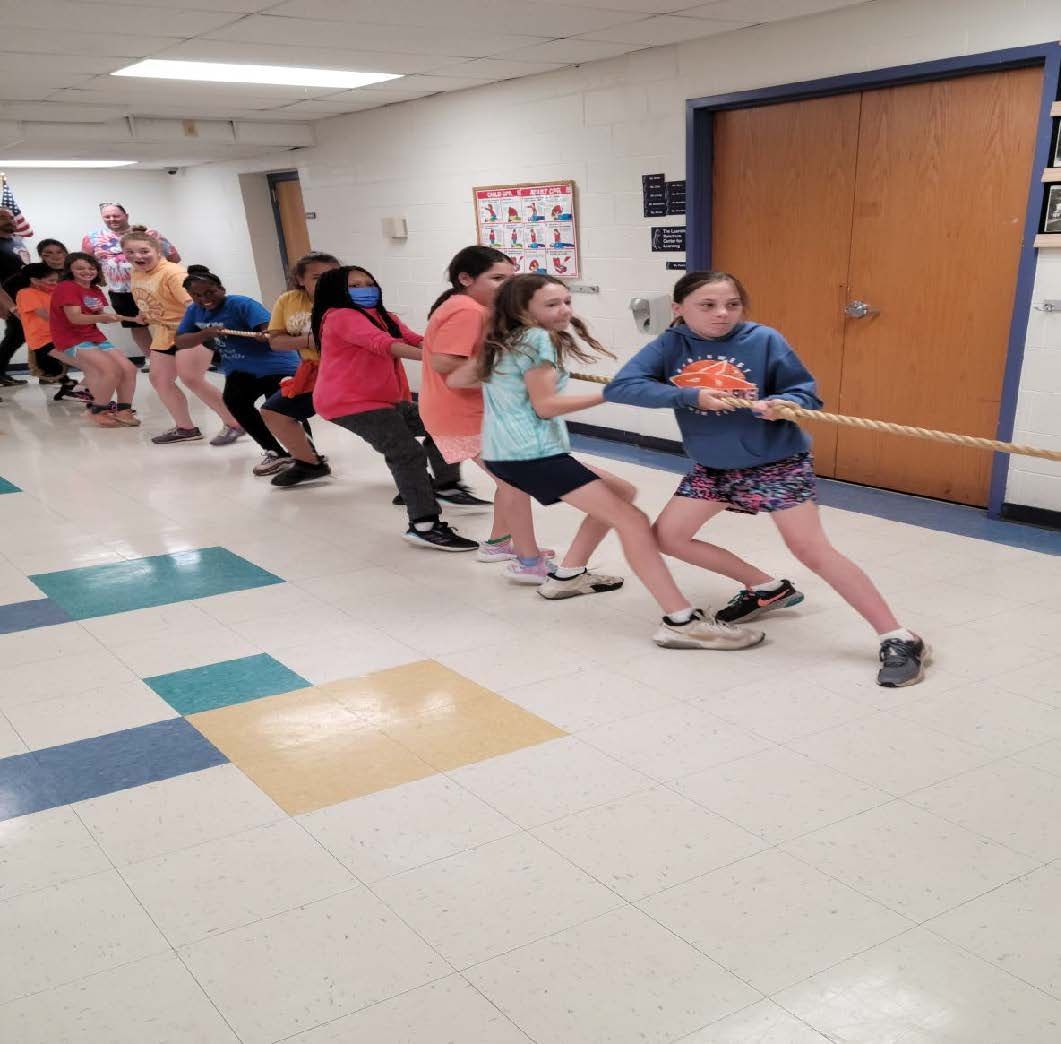11/13/20 - Friday Forget-Me-Nots by Jim Silcott
Photo Caption: Some of our second graders. Future Ohio State Buckeyes!

Dear Our Lady of Peace Family:
I am presenting two updates from the Columbus and Franklin County Boards of Health as we continue to deal with this difficult situation:
COVID-19 FAQs for Schools and Parents
- Who is considered a case?
A case is an individual who has tested positive with a viral (PCR) or antigen diagnostic test, regardless if they have symptoms. Cases also include those who have received a clinical diagnosis from a physician or provider.
2. What are the isolation requirements for cases?
• For most persons with COVID-19, isolation can generally be discontinued 10 days after symptom onset, if symptoms have improved and at least 24 hours has passed since recovery (temperature below 100.4°F without the use of fever-reducing medications).
• A limited number of persons with severe illness may still exhibit symptoms and be infectious beyond 10 days, and may be required to follow isolation for up to 20 days after symptom onset.
• For persons who never develop symptoms, isolation can be discontinued 10 days after the date of their first positive test.
A Columbus Public Health (CPH) case investigator will work with the case to determine when they should be released from isolation, and will provide a clearance letter.
3. Who is considered a close contact to someone with COVID-19?
A close contact is anyone who was within 6 feet of an infected person for at least 15 cumulative minutes starting 48 hours from illness onset or from the day a test was conducted, regardless of mask use.
4. What are the quarantine requirements for close contacts?
A close contact must be quarantined for 14 days after the last/most recent contact with the case when the case was infectious. Test results, whether a negative viral test or positive antibody test, cannot shorten the 14 days.
Close contacts that share a room/living quarters (i.e., have ongoing contact with the case) should separate if possible. If separation is not possible, case contacts need to quarantine throughout the case’s period of isolation, plus an additional 14 days after case is released from isolation. This is a common situation for families with young children, or when a case cannot isolate to a separate bedroom and bathroom from the rest of the household. In those situations it’s considered continuous contact and therefore quarantine will be greater than 14 days.
5. What is the difference between isolation and quarantine?
Isolation separates people with an infectious disease from people who are not sick. Quarantine separates people who are exposed to an infectious disease to see if they may become sick.
6. Who needs to be notified when a student or staff at a school is identified as a case?
• Parents should notify their school within 24 hours of a COVID-19 diagnosis.
• Schools must follow the Ohio Department of Health Director’s Order on case notification and reporting:
1. Within twenty-four (24) hours of becoming aware of a student, teacher, staff member, or coach who tests positive or is diagnosed with COVID-19, a school should report a case to CPH using the following link: https://www.columbus.gov/publichealth/coronavirus/schoolreporting-form/. CPH will review all submitted forms and promptly follow-up as needed.
2. Within twenty-four (24) hours of becoming aware of a student, teacher, staff member, or coach who has tested positive or been diagnosed with COVID-19, a school shall notify parents or guardians of students of the existence of the case in writing and share as much information as possible without disclosing protected health information.
3. Written notification of a positive test or case shall be sent to the parents or guardians of all students who share a classroom space or have participated in a school activity during the COVlD-19 infectious period of a student, teacher, staff member, or coach.
4. Written notification shall also be provided to all parents or guardians of students at the school building notifying them of a positive test result. This schoolwide notification may be made using email or an established website. Schools are required to provide this notification with each case, although schools are permitted to consolidate notifications if necessary.
7. What happens after a case is reported to Columbus Public Health?
CPH staff will call the school after receiving notification of a positive case to identify potential contacts of the case in cooperation with the school. Schools should begin to identify close contacts while they wait for CPH to call. For this reason, CPH recommends that all children have an assigned seat and that seating charts are maintained for classrooms and busses to assure proper identification of close contacts.
8. What will happen with personal information obtained during the contact tracing process?
Any information shared with CPH about cases and close contacts is confidential. This means that personal and medical information will be kept private and only shared with those who may need to know, such as a healthcare provider. The name of the case will not be revealed to those identified as a close contact.
9. What should the school do if a student begins to feel ill during the day?
The child should be sent home; parents should follow up with the child’s doctor for a possible alternative diagnosis or COVID-19 test order. Please see the Child In-Person Participation Algorithm, attached to this document, for return to school criteria, and begin to identify close contacts to prepare for a potential COVID-positive test result. Staff and students may continue attendance per schedule until positive results are confirmed and close contact is verified.
10. Why is a person considered a close contact if they are wearing a face covering?
While research indicates masks may help those who are infected from spreading the infection, there is less information regarding whether masks offer any protection for a contact exposed to a symptomatic or asymptomatic patient. Therefore, the determination of close contact should be made regardless if the person with COVID-19 or the contact was wearing a mask. Please click here for more information about face coverings.
11. How is contact tracing conducted with team sports?
Contact tracing can become very challenging with team sports. It might be difficult to assess the risk in these scenarios with complex interactions that are difficult to track and measure. If the identity of all persons in close contact with an infected individual cannot be readily determined, d may make the decision for the entire team (or teams) to self-quarantine for 14 days following exposure. Information about this can be found on the CDC’s website and within the Ohio Department of Health Order that Provides Mandatory Requirements for Youth, Collegiate, Amateur, Club and Professional Sports.
12. If a student is ill with a condition other than COVID, should other children that live in the house stay home, even if they have no symptoms?
Siblings do not need to stay home unless their sibling tests positive for COVID-19, or they were exposed to a confirmed case.
13. When can ill (COVID, or alternate diagnosis) students return to school?
Please see the Child In-Person Participation Algorithm, attached to this document.
14. If a student or staff is identified as a case, but 6 feet spacing has been maintained in the class, would the entire class need to quarantine?
CPH recommends that all children have an assigned seat and that seating charts are maintained for classrooms and busses to assure proper identification of close contacts. A CPH case investigator will work with school leadership to determine who needs to be quarantined.
15. When should a school consider closing the school building?
Considerations for building closures will need to be assessed on a case-by-case basis after reviewing case and exposure information.
16. Should close contacts of a case get tested for COVID-19?
CPH recommends all individuals with symptoms gets tested.
A close contact that does not have symptoms (asymptomatic) may choose to get tested. If an asymptomatic close contact tests negative, they should continue to stay home and self-quarantine away from others for 14 days after the last exposure to the COVID-19 case and follow all recommendations from the health department. This is important because symptoms can appear up to 14 days after exposure. A negative result before the end of the quarantine period does not rule out possible infection. An asymptomatic close contact does not need a repeat test unless they develop symptoms.
For general questions or concerns that do not need immediate attention, please call our general information line at 614-645-1519.
To report violations of state public health orders such as facial covering, prohibited activities, social distancing requirements and other, please visit https://311.columbus.gov/.
FROM: Dr. Mysheika Roberts and Joe Mazzola
We are following up on our conversation with Franklin County superintendents earlier this week, and the request of the group to put some guidance in writing about COVID 19 and k-12 education. Yesterday, we met with our local COVID Defense Team to discuss next steps in our collective fight against COVID-19. We are encouraged by the many partners who were at the virtual table, including some of our k-12 leaders, and the commitment we all share to protect the health and safety of our community, including our youngest residents.
Cases are increasing at a rate not seen since the pandemic started and new cases are occurring as a result of gatherings at people’s homes and informal settings, outside of schools and businesses where safety measures are closely monitored and followed. As we move into the ninth month of the pandemic, we know more now than we did at the onset and we continue to learn as we go.
Despite rising case numbers, we believe that it is safe for kids to go back to and remain in the classroom as long as all safeguards are followed, including wearing a mask and social distancing. The data shows that children and teachers are safe in the classroom, our behavior outside of schools puts them – and all of us – at risk. We also understand that each district has to make the best decisions for its students, educators and families. Franklin County Public Health and Columbus Public Health will continue to support our districts as we all continue to navigate this pandemic.
As our COVID Defense Team works to prevent the spread of COVID-19 in our community, we are asking everyone to help protect their individual health – and the health of our entire community – by avoiding gatherings with people outside of your household, wearing a mask, staying home if you are sick, keeping your distance and washing your hands. We also remind everyone that if they have been exposed to COVID-19, they must quarantine for 14 days regardless of a negative test result. You cannot test your way out of quarantine! We understand that the community is tired, but we cannot let our guard down and give up now. It will take all of us doing everything we can to once again flatten the curve and get to the other side of this pandemic.
Jim Silcott




